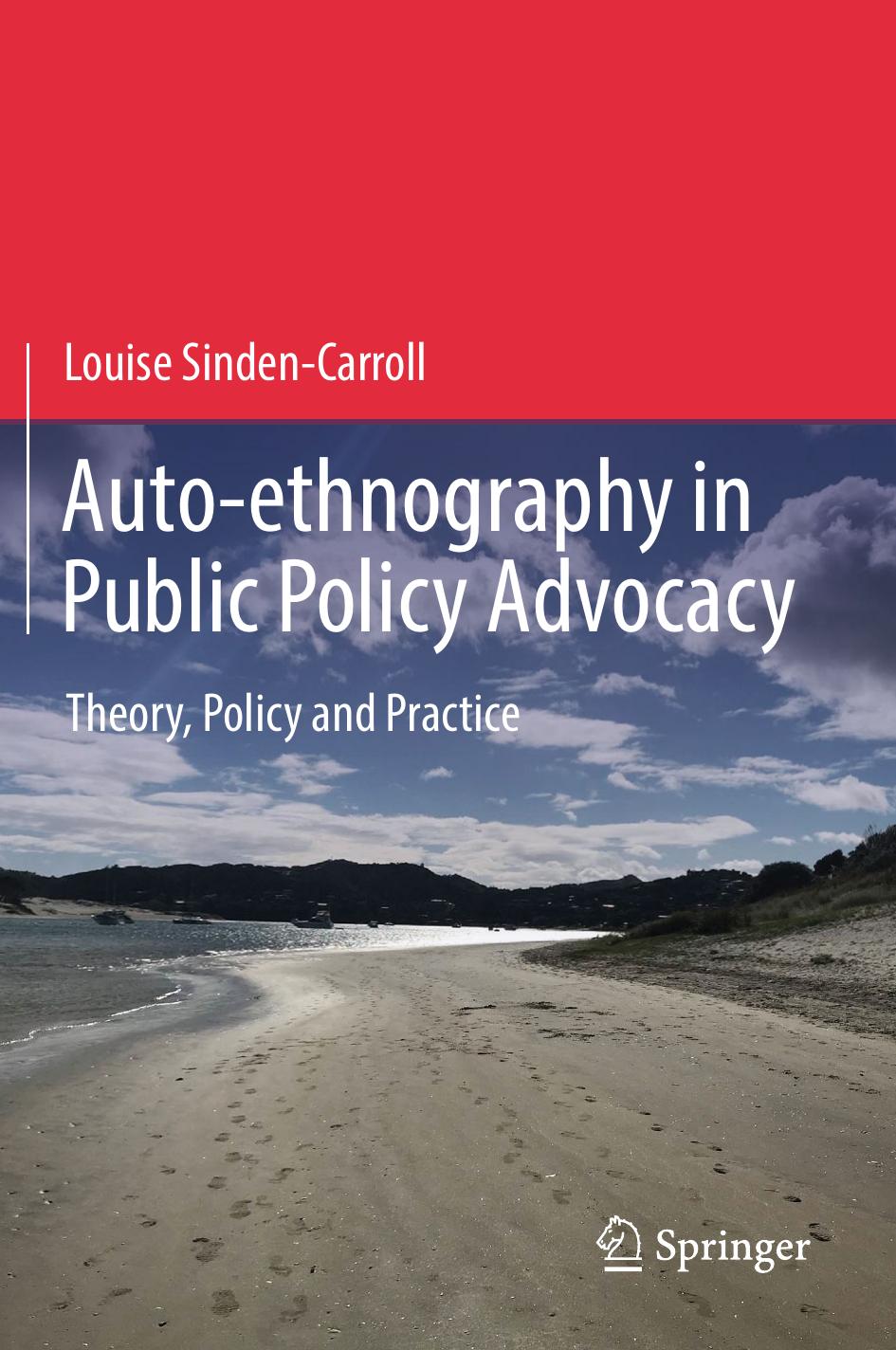Auto-ethnography in Public Policy Advocacy by Louise Sinden-Carroll

Author:Louise Sinden-Carroll
Language: eng
Format: epub, pdf
ISBN: 9789811313226
Publisher: Springer Singapore
As CEO of the Foundation, I was exposed to much that occurred in the Hard of Hearing sector. Accordingly, as an auto-ethnographer, I “adopt[] a cultural lens to interpret observed behaviour, ensuring that the behaviours are placed in a culturally relevant and meaningful context…[and with an] open mind…explore rich, untapped sources of data not mapped out in the research design” (Fetterman, 2010).
Importantly, when undertaking action research I am “contributing to a stream of action and inquiry which aims to enhance the flourishing of human persons, their societies, communities and organizations and the wider ecology of which we are all a part” (Reason & Bradbury, 2001).
By applying an auto-ethnographic research design, my vast lived experience and personal perceptions as a person with hearing loss and significant medical challenges contribute to the rich and colourful texture that would otherwise be absent if the value of my views as an insider were unavailable or denied.
The ethnographic approach acknowledges that the relationship between the observed and the method of observation is entwined with valued judgments pervading even the most objective research. This is because “[p]eople act on their individual perceptions and those actions have real consequences—thus the subjective reality each individual sees is no less real than an objectively defined and measured reality” (Fetterman, 2010). In respect of that it is also vital to recognize that the “exact relationship between knowledge, language and reality is inherently unquantifiable…” (Midgley, 2000) and our personal valued judgments will be as influential as evidence-based facts.
In fairness, “there will be some problem situations in which hard system methodologies yield the most satisfactory results” (Jackson, 2000) but there is a real need for flexibility in approach to ensure the most appropriate methodology is applied and for recognition by all researchers, whether working quantitatively or qualitatively, that they will personally impact on their research. Having considered the researcher and the method of research, it is important to now consider the research subjects.
Whilst working in the New Zealand non-profit sector and educating on human rights internationally, I have frequently observed those who are disenfranchised, expressing cynicism and feelings of marginalization, compounded by Government agencies that are unable or unwilling to be creative and meet their needs.
There are multiple barriers obstructing appropriate policy development for people of perceived low social status who are marginalized, such as prisoners with hearing loss, and unless advocacy bodies take up the task of publicly advocating for policy development and implementation on their behalf, it is very unlikely that prisoners with hearing loss (a vulnerable high needs group) would ever have their needs appropriately recognized and addressed.
In considering the boundaries when looking at the issue of prisoners who are hard of hearing, “Churchman argues that as much information as possible should be ‘swept in’” (Cordoba, Midgley, & Torres, 2000) and in this research the perspectives of a wide variety of stakeholders will be sought to ensure all aspects of marginalization are captured.
When setting the boundaries which are social or personal constructs that define the limits of the knowledge
Download
Auto-ethnography in Public Policy Advocacy by Louise Sinden-Carroll.pdf
This site does not store any files on its server. We only index and link to content provided by other sites. Please contact the content providers to delete copyright contents if any and email us, we'll remove relevant links or contents immediately.
Cecilia; Or, Memoirs of an Heiress — Volume 1 by Fanny Burney(31325)
Cecilia; Or, Memoirs of an Heiress — Volume 3 by Fanny Burney(30928)
Cecilia; Or, Memoirs of an Heiress — Volume 2 by Fanny Burney(30885)
The Great Music City by Andrea Baker(21195)
We're Going to Need More Wine by Gabrielle Union(18066)
Bombshells: Glamour Girls of a Lifetime by Sullivan Steve(13101)
Pimp by Iceberg Slim(12923)
All the Missing Girls by Megan Miranda(12740)
Fifty Shades Freed by E L James(12443)
Norse Mythology by Gaiman Neil(11875)
Talking to Strangers by Malcolm Gladwell(11864)
Crazy Rich Asians by Kevin Kwan(8342)
Mindhunter: Inside the FBI's Elite Serial Crime Unit by John E. Douglas & Mark Olshaker(7829)
The Lost Art of Listening by Michael P. Nichols(6464)
Enlightenment Now: The Case for Reason, Science, Humanism, and Progress by Steven Pinker(6403)
Bad Blood by John Carreyrou(5762)
The Four Agreements by Don Miguel Ruiz(5502)
Weapons of Math Destruction by Cathy O'Neil(5031)
We Need to Talk by Celeste Headlee(4862)
